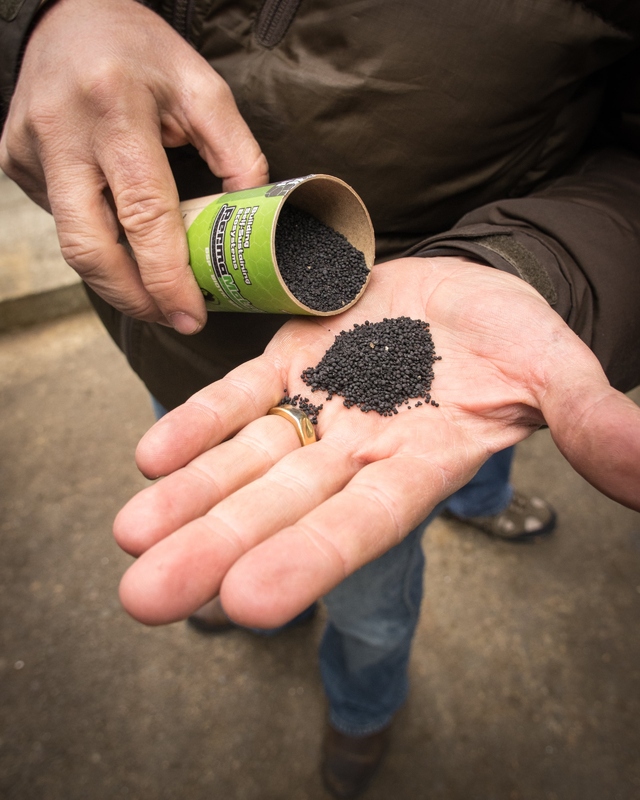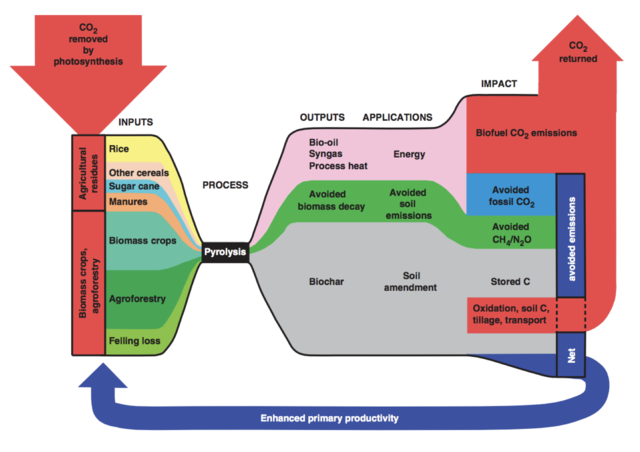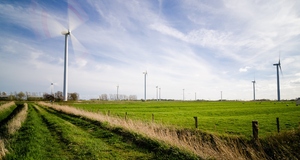Featured Article:Commercialization of Biochar and the Benefits for Climate Change and Agriculture
By
2016, Vol. 8 No. 12 | pg. 1/3 | »
IN THIS ARTICLE
AbstractBiochar is biomass that has been converted into charcoal through the pyrolysis process. Biochar is applied into soils for carbon sequestration or for improving soil fertility. The carbon bonds in biochar are very stable and do not break down easily which makes biochar a long term carbon storage solution. The physical structure of biochar improves soil fertility by decreasing soil tensile strength and bulk density. Biochar also acts as a soil aggregate which provides habitat for microorganisms. Additionally, the porosity of biochar improves nutrient and water retention in soils thereby improving agronomic efficiency and increasing yields. An estimated 12% of anthropogenic emissions can be mitigated if biochar is used to its full potential. However, the costs associated with large scale biochar are preventing the technology from being fully utilized. Small scale biochar initiatives have more potential in terms of economic viability. In order for large scale biochar facilities to be economically viable while providing solutions in a sustainable manner, the global economy needs to adopt carbon pricing mechanisms, and industry needs to internalize costs such as energy production and agricultural soil loss.
A biochar sample. Photo: Oregon Department of Forestry CC-2
Global issues such as population growth, climate change, soil degradation, resource depletion, food security and carbon pricing are converging and highlighting the need for scalable solutions. Biochar is an emerging product on the frontier of soil science that may help to mitigate these issues in a sustainable way. The International Biochar Initiative (IBI, 2016) defines biochar as a solid material obtained from the carbonization thermochemical conversion of biomass in an oxygen limited environment. This process is called pyrolysis. Biochar is currently produced with the specific intention of being used as either a method of carbon storage, or in agriculture as a soil amendment, or both. It is a relatively new concept in carbon storage strategies and as an agricultural amendment in modern agriculture but it has been used for millennia by many civilizations around the world to improve soil fertility. Remnants of anthropogenic black carbon have been found in Africa, Asia and South America (Scholz et at, 2014). The positive effects of biochar used on ancient soils, notably in the Amazon Basin, are still evident today and highlight a considerable capacity to store carbon (Lehmann et al, 2003), (Scholz et at, 2014). As a result, much of the research on biochar stems from these Amazonian soils which have been termed “Terra preta.” Studies have shown that biochar has potential for carbon sequestration, improving soil fertility and crop production (Lehmann et al, 2003), (Chan et al, 2007). There is also potential for biochar to be used in carbon offset markets (Galinato et al, 2011). Biochar can also produce clean renewable energy (IBI, 2016). However, biochar is complex and has a range of effects on soil ecosystems based on production methods, biomass feedstocks, and application processes (Scholz et at, 2014). Despite the issues that biochar commercialization faces, the potential for biochar to provide solutions for soil loss, degraded soils, food security, and climate change are very exciting. This paper aims to build an understanding of how biochar affects soil environments, and to subsequently determine the potential for biochar to be part of an economically viable solution to some of the world’s most pressing issues. This paper will explore the chemical, physical, and biological properties of biochar and how biochar works as a tool for carbon sequestration and for improving agricultural productivity. The paper will determine whether biochar applications are economically feasible within current market conditions and explore large and small scale commercialization. Chemical Properties of BiocharBiochar has a range of effects on soil depending on the temperature of the pyrolysis process and the feedstock type (Nguyen et al, 2009). For example, higher temperatures of pyrolysis result in a higher pH level. Different feedstocks such as oak wood, corn stover, and poultry litter made into biochar have different levels of pH as well. The feedstocks and temperature used in pyrolysis also affect cation-exchange capacity (CEC) (Nguyen et al, 2009) which is important for soil fertility. The higher the CEC, the more fertile the soil is. Soils amended with biochar by prehistoric Amazonian cultures have been found to have unusually high cation exchange capacity (Grossman et al., 2010). These fertile soils are an example of how biochar can benefit the agricultural industry. Biochar is a stable sink of carbon into soil. This is because of the aromaticity of the carbon after pyrolysis (Nguyen et al, 2011). A high aromaticity means that the molecular structures are highly stable and do not easily break apart or react with other substances. Biochar also contains minerals in the form of ash present within the small pores and aromatic molecular structure. These minerals are available for biological uptake (Lehmann, 2011); however, the extent to which these minerals are accessible to plants remains unstudied. As explained in above sections, sorption of beneficial nutrients and minerals are positive characteristics of biochar. However, sorption of harmful toxic compounds such as catechol has also been reported in biochar (Kasozi et al., 2010). If biochar increases the lifespan of toxic compounds which would otherwise break down at a faster rate in other environments, then it could be problematic. More research is needed in this area. Physical Properties of BiocharBiochar typically has a positive physical impact on soils. One study (Chan et al, 2007) showed that biochar inputs of more than 50 tonnes per hectare can decrease soil tensile strength. The overall soil tensile strength decreased because the tensile strength of the applied biochar was less than the soil. Lower tensile strength in soil allows roots to grow and penetrate the ground easier. Seed germination and mycorrhizal fungi growth is also enhanced in lower tensile soils (Lehmann et al., 2011). Bulk density is another physical property of soil that is affected by the addition of biochar (Major et al, 2010). Biochar has a low bulk density because of the prevalence of micro and macropores (Downie et al., 2009) which can hold air and water. The porous structure of biochar particles means it has considerably high surface area. These numerous pores within the internal structure of biochar have been found to be important for biological processes (Lehmann et al., 2011). Biochar can also act as a soil aggregate (Lehmann et al., 2011). Aggregate stability measures the ability of soil to resist disintegrating when disruptive forces such as plow tillage and water/wind erosion come in contact with it. High levels of aggregate stability indicate healthy levels of organic matter content, biological activity, and nutrient cycling in soil (Andrews & Wander, 2008). Studies suggest that biochar can provide benefits that have similar functions to soils with high aggregate stability such as protection for organic matter, habitat for soil organisms, as well as nutrient and water retention (Tisdall and Oades, 1982). The water retention properties of biochar aggregate surfaces are especially attractive from a perspective of water use efficiency. In addition, the pores in biochar and soil aggregate surfaces allow for aeration which is required for biological respiration. As such, biochar surfaces have been found to be an important habitat for aerobic microbes because these aggregate surfaces provide more access to organic matter, oxygen, and moisture. This results in higher rates of organic decomposition (Lehmann et al., 2009) which provides more nutrients to plants. The water retention properties of biochar are worthy of further consideration. Drying soils can stress and kill microorganisms which are essential for soil and plant functions. The moisture retention of biochar ensures the continued hydration for microorganisms (Glaser et al., 2002) that would otherwise be exposed to the damaging effects of drying soil (Lehmann et al., 2009). Biochar therefore has considerable potential as a soil amendment for areas that are prone to drought such as California. Different feedstocks and temperatures of pyrolysis result in different pore structure which affects total surface area (Downie et al., 2009). The varying physical attributes of different biochar products could present issues for quality assurance in commercial operations. Biological Properties of BiocharHealthy biological functions in soil and the resulting ecosystem services provided by those functions have implications for the chemical and physical properties of soils such as soil structure, stability, aeration, and water use efficiency, as is explained in above sections. Biodiversity and abundance of soil organisms have been found to be critical components of healthy biological functions in soil. Organic amendments to soil have been suggested as important means for managing biodiversity and abundance of soils organisms (Brussard et al., 2007). Biochar can be considered an organic soil amendment. Studies have analyzed soils in the Brazilian Amazon where certain soils have very distinct variances in black carbon but homogeneous mineralogy levels. The high black carbon levels are due to incompletely burned organic matter, ie. biochar. Studies found greater richness of bacterial organisms in soils containing biochar (Grossman et al., 2010). One study found that bacterial diversity in biochar amended Terra preta soils was 25% higher than unmodified soils (Kim et al, 2007). Another study found higher levels of bacteria by more than two orders of magnitude in soils with biochar compared to soils without biochar (O’Neill, 2009). Furthermore, bacterial growth and reproduction rates have been found to increase in soils amended with biochar (Steiner et al., 2004). Another study found that biochar can improve nodule formation of arbuscular mycorrhizal fungi by 2.3 times (Nishio, 1996). Arbuscular mycorrhizal fungi have a high absorption capacity for water and can convert phosphorous minerals into a form that is useable to plants. The symbiotic relationship between mycorrhizae and plant roots is essential for a plant’s health, specifically, in the uptake of nutrients (Balzergue et al; 2011), (Kabir; 2005). The effect of biochar on larger soil fauna remains under-researched. This is an important area of research because soil fauna are an important part of the soil food web, could modify biochar in unknown ways, and may be adversely affected by unknown toxic components in biochar (Lehmann, 2011). Earthworms have been shown to prefer soils with biochar amendments (Topoliantz & Ponge, 2003) but only within certain biochar feedstocks. Biochar as a Climate Change SolutionConverting biomass into biochar locks carbon in soils because of the high aromaticity of biochar (Nguyen et al, 2011). This which significantly increases the residence time of carbon in soils compared to the decomposition of biomass where much of the carbon is converted into atmospheric carbon dioxide. Soil holds an estimated 2500 gigatonnes of carbon compared with 560 gigatonnes in vegetation sources (Lal, 2008). This indicates that soil can be a potentially significant sink for carbon if more biomass is converted into biochar instead of allowing biomass to decompose. Each year, about 120 gigatonnes of carbon are converted to plant energy through photosynthesis where half is retained in the plant, and half is released as CO2 through plant (autotrophic) respiration. Studies estimate that carbon emissions from biomass decomposition in soil roughly equals carbon inputs with an annual flux of about 55 gigatonnes (Prentice et al., 2001). Regular biomass decomposes relatively rapidly by microorganisms which respire carbon dioxide in the process of breaking down the organic matter. One study shows that 80 to 90 percent of carbon added to soil in tropical environments in the form of rye and corn biomass was converted out of the soil into carbon dioxide after a period of five to ten years (Jenkinson & Ayanaba, 1977). By analysing gross primary productivity (GPP), studies have shown that there is a net carbon storage of 20 percent when biomass is converted to biochar and added to soils (Lehmann, 2007). Another study gives a range of how much carbon biochar will retain. Between 10 and 70 percent of carbon from the original biomass is retained in soil and for much longer time periods of centuries or millennia (Scholz et at, 2014). The issue is the availability of biomass feedstocks that can be readily converted into biochar and subsequently marketed as a product. Much of the biomass created through photosynthesis is practically, economically, or environmentally inaccessible. Agricultural biomass, urban wastes, mill residues and forestry waste resources are some of the obvious feedstocks that are more accessible for biochar conversion. Lehmann (2007) estimated that accessible resources like these could stabilize about 600,000 kilotonnes of carbon dioxide equivalent (Kt CO2 e) globally. Methane (CH4) and nitrous oxide (N2O) are two potent greenhouse gases and more effective than carbon at trapping heat inside earth’s atmosphere. Methane is 25 times more powerful as a greenhouse gas while nitrous oxide is 298 times more powerful (IPCC, 2007). Biochar is a potential tool to mitigate the emission of both of these greenhouse gases in the agricultural industry. The diversion of organic matter feedstocks from landfills to pyrolysis facilities prevents anaerobic decomposition that produces methane (Gaunt & Lehmann 2008). There is no shortage of feedstocks that could be converted into biochar. For example, a study found that in the United Kingdom alone, 10 million tonnes of wood are sent to landfills each year (Ijeh, 2015). This wood waste could become a valuable product by converting it into biochar instead allowing anaerobic decomposition which is typical in landfills (Barlaz, 2006). Nitrous oxide emissions are controlled by a number of variables in agriculture; however, one major source of emissions is nitrogen fertilizers (Kroeze & Seitzinger, 1998). Studies show that nitrogen emissions can decrease if agriculture is managed to “optimize the crop's natural ability to compete with processes whereby plant available nitrogen is lostfromthe soil-plant system” (Freney, 1997). Biochar can improve nutrient retention (Lehmann et al., 2009) which decreases the need for fertilizer. The relationship between nitrogen fertilizer and nitrous oxide fluxes is linearly related (Kelliher et al, 2014) which means that nitrous oxide emissions could be reduced significantly from using biochar. There are risks from a climate change perspective though. Specifically, there is potential for nitrous oxide and methane emissions in the production of biochar in inefficient pyrolysis processes (Scholz et at, 2014). If biochar is not mixed effectively into soil, it could become a dark layer and increase the albedo effect as well. Despite the risks, which are manageable through establishing standards and safeguards (Scholz et at, 2014), the potential for effectively managed biochar application is significant. A notable study calculated the total amount of anthropogenic greenhouse gas emissions that could be offset by biochar, including carbon dioxide, methane, and nitrous oxide. The study found that sustainable biochar could offset 12% of these emissions on an annual basis (Woolf et al, 2010). The study highlighted that this could be achieved without affecting global food security, natural habitat, and soil resource, pointing toward the environmental and social sustainability of biochar offsets. Figure 1 shows the carbon cycle of biochar feedstocks and carbon sinks.Continued on Next Page » Suggested Reading from Inquiries Journal
Inquiries Journal provides undergraduate and graduate students around the world a platform for the wide dissemination of academic work over a range of core disciplines. Representing the work of students from hundreds of institutions around the globe, Inquiries Journal's large database of academic articles is completely free. Learn more | Blog | Submit Latest in Environmental Studies |




















